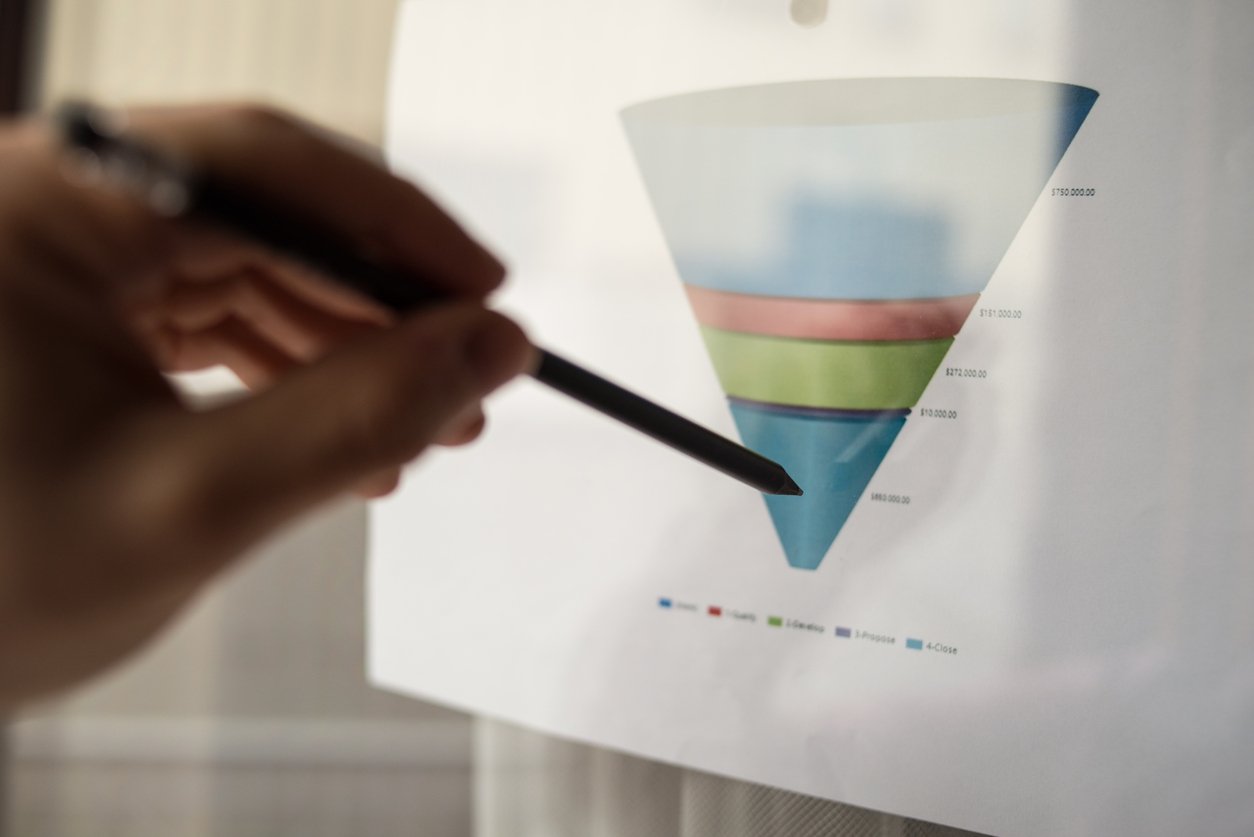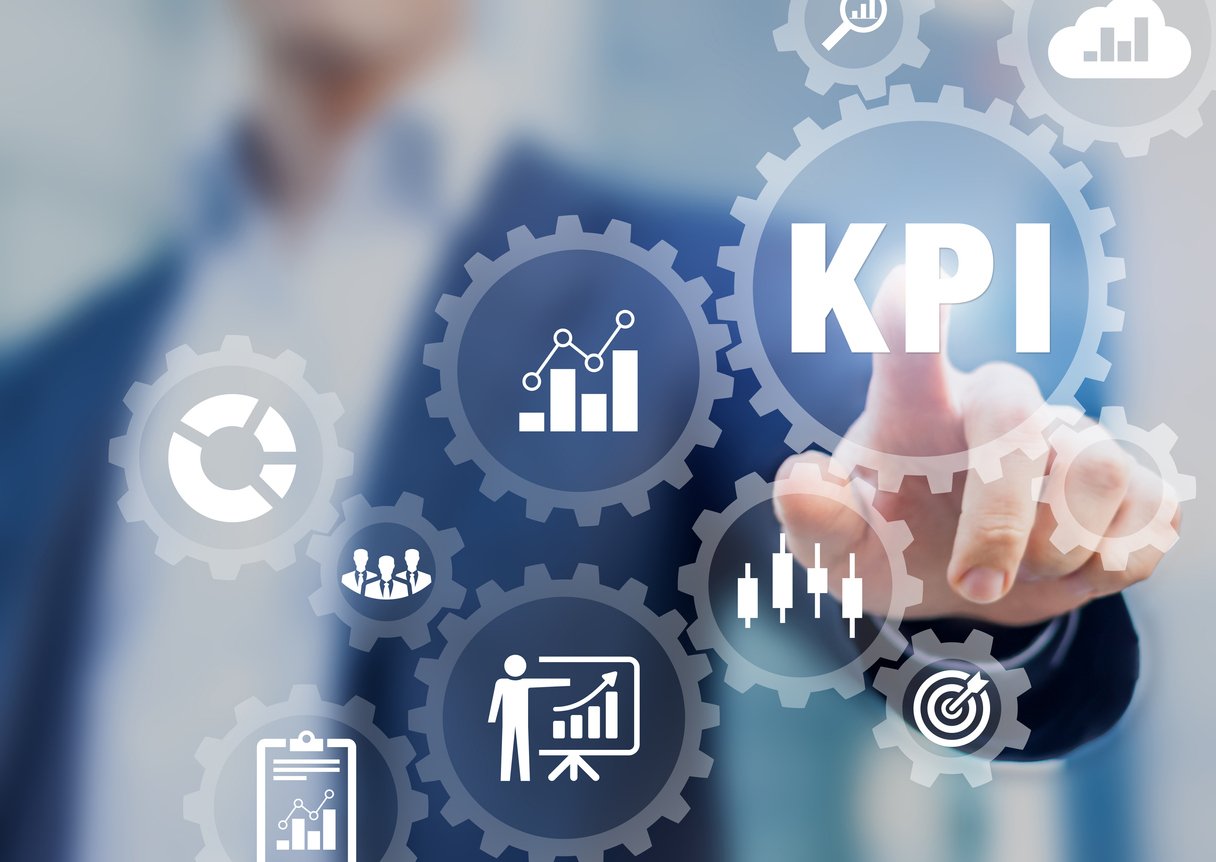
Streamlining Success: A Guide to Pipeline Sales Software
 Updated on
Updated on
 By Robins Dorvil
By Robins Dorvil
Robins Dorvil
With over 7 years of experience in the insurance industry, 4+ years as an Account Executive at Ringy CRM, and 17 years as a Creative Real Estate Inves...
learn more
Robins Dorvil
With over 7 years of experience in the insurance industry, 4+ years as an Account Executive at Ringy CRM, and 17 years as a Creative Real Estate Inves...
Table of Contents
Table of Contents
How long is your sales process? Do potential customers tend to drop off or get bottlenecked at certain points? If your sales process is too long and has too many steps or approval requirements (e.g., I have to talk to my manager to move this along), then it increases the chance of prospects getting frustrated and ultimately saying, “See ya!” as they walk out of that figurative door.
Streamlining your sales process involves closely examining your sales pipeline, also called a sales funnel. With all the normal steps involved, mapping out a typical sale in front of you helps you understand what your customers and sales reps go through with each sale. For B2B organizations, the sales pipeline will be long, while with B2C, it’s usually quite short. However, improving your sales pipeline can be done whether your sales process typically takes only a few minutes or months.
One of the key ways that you can easily visualize your sales pipeline is by using sales pipeline CRM software. This software is usually integrated with your CRM (e.g., Ringy has built-in sales pipeline software) or can be purchased as a standalone program. Either way, being able to use real-time sales pipeline software helps you continuously improve and optimize your sales process.
In this article, we explore more about the world of sales pipelines, including what they are, how they can help you enhance your sales process, and much more.
What is a Sales Pipeline CRM

A sales pipeline CRM is a piece of software that prioritizes features that help you visualize and optimize your sales process. Through this visual representation of your sales process or cycle, you can logically organize your leads and even predict potential revenue based on certain metrics (e.g., past purchasing behavior, overall conversation rate, sales cycle length, average contact value, and more). In other words, think of a sales pipeline CRM like a living flowchart. Each new lead that comes in and each step and stage in your sales process is displayed, allowing you to identify and pinpoint areas of improvement and optimization.
The Importance of an Efficient Sales Pipeline Platform
Imagine that you’re in a store with the product you want to purchase, but you can’t find someone to help you. Each cashier’s desk is empty, and a salesperson or other employee doesn’t seem to be in sight. You wander around the store, trying to make your purchase, but ultimately get frustrated, put the product down, and leave.
Now imagine that scenario is what your potential customers experience when they are trying to purchase something from your business. Sure, sales processes might not be as straightforward as a simple checkout if you sell to other businesses, but it still doesn’t have to be a frustrating experience. In other words, even if a sales process does have to have multiple steps and checkpoints, that doesn’t mean it has to be a convoluting or frustrating experience for your prospects.
In the quest for an efficient pipeline sales tool, it’s important to know the difference between sales efficiency and sales effectiveness:
|
Sales Efficiency |
Sales Effectiveness |
|
Refers to your sales operations and how streamlined the process is from getting a new lead to moving them through your entire sales cycle. |
Is your sales team’s ability to turn leads into customers at each stage of your sales process. To measure effectiveness, you’ll have more converted leads than ones that are lost. |
Sales efficiency can be calculated by taking the costs involved in a specific sales period and determining the return on investment. A simple calculation is as follows:
$ Value of New Revenue / (Total of Sales and Marketing Costs)
For example, if you earn $5,000 in new revenue in one sales quarter and you spend $2,500 in total on sales and marketing costs, then congratulations, you’ve got a great return on your investment. By keeping track of the revenue gained from your sales and marketing efforts, you’re in a better position to optimize and improve your sales process.
How Sales Pipeline Software Enhances the Sales Process

If you’re interested in making your sales process better and more efficient, then you absolutely need pipeline sales software. The best sales pipeline management software plays a pivotal role in enhancing the sales process in several key ways:
1. Allows You to See Your Entire Sales Process at a Glance
Pipeline sales software provides real-time visibility into the sales pipeline, allowing sales managers to track the progress of deals at every stage of the sales process. With detailed insights into key metrics such as conversion rates, win rates, and sales velocity, managers can identify bottlenecks, forecast sales performance, and make data-driven decisions to optimize the sales process.
2. Helps You Improve Your Sales Process Flow and Method
Pipeline sales software enables organizations to create customizable sales workflows tailored to their unique sales processes and business requirements. By defining standardized stages, milestones, and actions for each deal, sales teams can ensure consistency, efficiency, and accountability throughout the sales cycle.
3. Helps You Focus on the Leads Most Likely to Convert
With pipeline sales software, sales teams can effectively manage leads by centralizing lead data, automating lead qualification, and assigning leads to the appropriate sales representatives. By streamlining lead management processes, sales reps can focus their efforts on nurturing high-potential leads and converting them into customers.
4. Provides Data-Driven Insights
Pipeline sales software is often able to generate actionable insights and reports based on historical data, trends, and performance metrics. By analyzing sales data, identifying patterns, and forecasting future sales outcomes, organizations can gain valuable insights into customer behavior, market trends, and sales performance, enabling them to make informed decisions and strategies.
5. Automation Simplifies Task Management
By automating repetitive tasks and reminders, such as follow-up emails, calls, and meetings, pipeline sales software helps sales reps stay organized and focused on high-priority activities. By automating routine administrative tasks, sales teams can save time, reduce manual errors, and increase productivity.
For example, Ringy’s drip campaigns allow sales and marketing teams to proactively reach out to prospects and leads at the right time via emails or SMS that are sent as a result of a triggered action. When a new lead comes in and is qualified, for example, a welcome email can be sent immediately to start the conversation.
How to Build a Software Sales Pipeline

After you invest in a sales pipeline CRM software, you’ll need to build your sales cycle within it. Here are some steps that you can follow to effectively build your sales pipeline platform:
1. Outline the Stages of Your Sales Process
While you can start with a template, it’s always worth putting in the time and effort to outline the different stages of your sales process. Doing so helps you identify the different points that your prospects have to move through in order to reach the end of their buying journey with your company.
At a high level, the steps that your prospects will go through in any sales process include:
|
High-Level Step of a Sales Process |
Description |
|
Awareness |
The potential customer realizes that they have a pain point or opportunity and begins looking for a product or service that meets those needs. |
|
Consideration |
At this point, the buyer knows what they need and has developed criteria for evaluating different products or services. |
|
Decision |
The buyer is ready to make a decision on a product or service that will meet their needs and compare different solutions. |
Depending on your business and the industries you serve, you might have multiple steps in each of these stages.
For example, your sales pipeline might look something like this:
- A potential customer reaches out to your organization through your website (by filling out a form), through social media, or by replying to an email from one of your salespeople.
- An appointment is booked with a salesperson so that the prospect can learn more about your solution.
- During the appointment, your salesperson proposes your solution to the prospect and discusses the next steps.
- A proposal is sent to the prospect.
- The solution is either accepted or rejected by the prospect.
- If the solution is accepted, then the prospect moves on to onboarding. If the prospect rejects the proposal, then the salesperson reaches out to discover why and/or adjust the proposal to better suit the prospect’s needs.
2. Identify How Many Opportunities Usually Continue Per Stage
How much time does each prospect spend at each stage of your sales process? What are the averages? Knowing these statistics can help you optimize your sales pipeline. For example, let’s say that, on average, a prospect spends about three weeks in the demo stage of your sales pipeline, where they are learning about your product and asking your sales rep questions about different use-case scenarios that apply to their business. But prospects that eventually become buyers spend a bit more time in this stage-more like 1–2 months.
So odds are, when customers spend a bit longer in the demo stage, they’re more likely to become buyers. Maybe the demo stage needs to stay longer rather than be an area to optimize. On the other hand, if more customers are dropping off during the negotiation stage, that could be an area that deserves a second look.
Once you know your conversion rates per stage, it’s easier to set monthly or quarterly sales estimates.
3. Calculate the Number of Opportunities You Need at Each Stage to Meet Sales Goals
Now that you have some conversion rate numbers for each stage in your sales pipeline, you can determine how many opportunities you need in each stage of your sales pipeline to reach your sales goals. To determine this:
- Start with your monthly or quarterly revenue and divide it by your average deal size.
- Divide the result by your yield probability per sales pipeline stage. For example, if you need to win at least 160 deals and your reps usually close 80% of the deals in the negotiation stage, you’ll need at least 200 opportunities in that stage.
Metrics to Track with Sales Pipeline Software

When utilizing sales pipeline software, it's vital to monitor various metrics to ensure optimal performance and effectiveness:
- Lead Velocity Rate (LVR): Measures the rate at which leads are entering and progressing through the pipeline, indicating the growth of potential opportunities.
- Conversion rates: Track conversion rates at each stage of the pipeline to identify areas for improvement and optimize sales strategies.
- Pipeline velocity: Evaluates the speed at which deals move through the pipeline, helping to forecast future revenue and identify potential bottlenecks.
- Deal size distribution: Analyze the distribution of deal sizes within the pipeline to understand revenue potential and prioritize high-value opportunities.
- Win rate: Monitor the percentage of deals won compared to those lost or abandoned to gauge sales team performance and effectiveness.
- Sales cycle length: Measure the average time deals take to progress from initial contact to close, identifying opportunities to streamline processes and accelerate sales.
- Pipeline coverage ratio: Assess the ratio of potential revenue in the pipeline compared to sales targets, ensuring sufficient opportunities are available to meet goals.
- Activity metrics: Track sales team activities such as calls, meetings, and emails to evaluate productivity and alignment with pipeline objectives.
- Lead response time: Measure the average time it takes for sales reps to respond to new leads, ensuring timely follow-up and maximizing conversion opportunities.
- Pipeline leakage rate: Calculate the percentage of deals lost or stalled at each stage of the pipeline, identifying areas where improvements are needed to prevent revenue loss.
- Customer acquisition cost (CAC): Determine the cost associated with acquiring a new customer by dividing total sales and marketing expenses by the number of new customers acquired within a specific period.
- Customer lifetime value (CLV): Assess the total value a customer brings to your business over their entire relationship, helping to prioritize high-value customers and tailor sales efforts accordingly.
- Churn rate: Track the percentage of customers who discontinue their relationship with your business over a given period, providing insights into customer satisfaction and retention efforts.
- Sales forecast accuracy: Evaluate the accuracy of sales forecasts compared to actual sales results, enabling more reliable revenue projections and resource allocation.
- Lead quality score: Assign scores to leads based on factors such as demographics, behavior, and engagement levels, helping to prioritize leads with the highest likelihood of conversion.
Conclusion
Mastering your sales pipeline with the aid of sophisticated software not only streamlines operations but also enhances overall effectiveness. By leveraging insights and metrics provided by these tools, businesses can refine their strategies, boost conversions, and ultimately achieve sustainable growth. It's not just about managing leads; it's about optimizing every stage of the sales journey to deliver exceptional customer experiences and drive lasting success.
To discover more about how Ringy can help you optimize your sales pipeline and help you organize your leads better so you can move them through your sales process quicker, reach out to us today for a demo.

Skyrocket your sales with the CRM that does it all.
Calling? Check. SMS? Check. Automation and AI? Check. Effortlessly keep in touch with your customers and boost your revenue without limits.

Take your sales to new heights with Ringy.
Sales in a slump? Ringy gives you the tools and flexibility you need to capture leads, engage with them, and turn them into customers.
Subscribe to Our Blog
Enter your email to get the latest updates sent straight to your inbox!
Categories
Related Articles
























































































